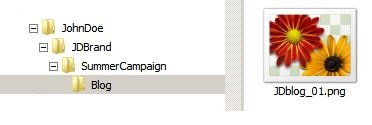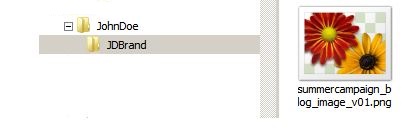Five Things Every Graphic Designer
Should Be Doing to
Promote Themselves By Haidan Dong
Your designs may be top notch, but even the best freelance graphic designer needs to know how to promote their services to win more business. To get more clients, you’ll need to make your design services known. As a freelancer, promotion is critical to master because most of the time you’ll have to do it yourself.
Here are the 5 things that freelancers should be doing to promote themselves.
How to Promote Yourself as a Freelance Graphic Designer
1. Create a Brand for Yourself
Before you do anything else, you need to brand yourself. This includes identifying your style, specifying the types of designer you are (e.g. print designer, web designer, etc.), creating a logo and more. Think about what makes your designs special, and why you design at all. Then translate that into your branding, whether it’s in your slogan, design portfolio, business cards, or anything else.
An established brand helps potential clients (and current clients) identify your business and understand why they should choose your services. Perhaps they identify with your values or find your style a perfect match for their business.
2. Create a Website
This is your “real estate” where you can get creative. We recommend creating your website on a platform that gives you traffic insights (e.g. WordPress). Your website is where you can take your branding to its highest level. Tell your story, show your designs, and make contacting you easy. Ensure that it is user-friendly and that it includes a quote form.
3. Promote on Social Media
Social media is also a great place to showcase your brand and drive traffic to your website. Many designers already use it, but make sure that you’re one step ahead by maximizing social media’s potential. First, separate your personal account from your business account to keep it professional. Many social media platforms also allow special features for business accounts, so be sure to take advantage of them.
Second, join groups—not just groups for designers but also groups related to potential clients and business partners. For example, if you specialize in designing for print, considering joining a print-related group. Not only will you get valuable information that could help your designing process, but these groups could also hook you up with some good deals in the future.
4. Network at Social Events
Networking online is important, but so is networking in person at social events. These include not just traditional networking events but also job fairs, trade shows, conventions, and more. Attending in person helps build trust between you and your potential customers or business partners.
Networking events are especially important for graphic designers because your clients will often be people who are a little less tech savvy. That’s why they need your help. So instead of interacting with you on social media, they may feel a lot more comfortable talking to you face to face.
Tip: If you design for print, social networking events are a great opportunity for handing out printed samples of your designs.
5. Start a Blog
When you create a blog packed with informative content, appealing designs and unique branding, you demonstrate that you’re a knowledgeable professional who is consistently producing high quality designs. Don’t forget to use SEO to increase your online presence, so that those searching online can find you.
Having a blog also gives you more things to post on social media. Link back to your blog when you repost the content on social media. And finally, interact with other design blogs to expand your professional network. You can start by subscribing to the Print Cafe Blog
Promoting your graphic design business is a step that every freelancer needs to take, from branding yourself to updating your blog frequently. Make sure your promotional strategy includes at least these 5 tactics so that you can expand your client base and grow your business. Need More Help or Information on any of our Print Products Call 516-561-1468
















